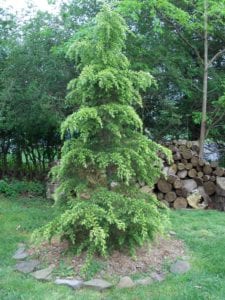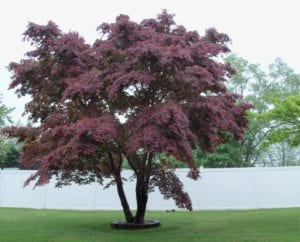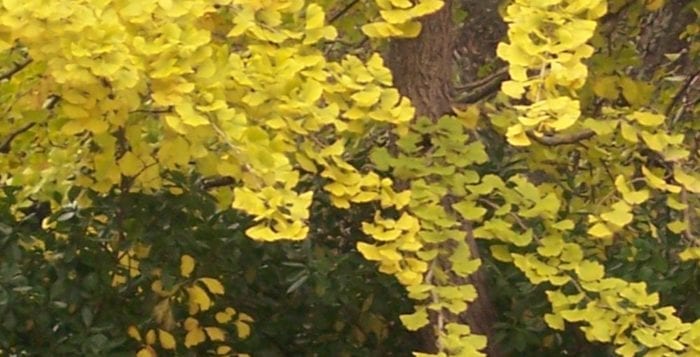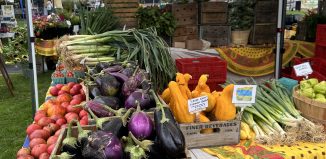Gardening: Selecting trees for your property
By Ellen Barcel
This is part one of a two-part series.
Selecting trees for your property requires some decision making. For example, which trees do well in acidic soil? Which trees tolerate drought? Which trees are fast (or slow) growers, depending on your needs? Which trees have negatives that may mean you would avoid them (see my columns on researching plants, Sept. 22 and 29). And what about the final height? Is this a specimen tree for the front of your house or a shade tree for your back patio? But, there are other factors involved in your choice. One is evergreen versus deciduous trees. A second is autumn leaf color and a third is final tree shape. Since trees take so long to mature, this is one decision you want to get right.
Evergreen vs. deciduous

Trees can be divided into evergreen and deciduous trees. Evergreen trees keep their needles (leaves) throughout the winter while deciduous ones lose their leaves in fall. Evergreen trees tended to evolve in climates that have short growing seasons. Keeping their needles over the winter is a survival mechanism for the trees since they have greenery ready to feed the tree quickly during that short growing season. Evergreen trees do eventually lose their leaves/needles, but it is later in the growing season after the new ones have come in. Evergreen trees include pine, spruce, cedar, juniper, arborvitae and hemlock.
The advantage of evergreen trees for the gardener is that they provide screening year round. If you have a sight you wish to block or screen, then evergreens are ideal. It could be an ugly wall or privacy screening for a hot tub or gazebo. While most needled trees are evergreen, remember that the dawn redwood, referred to sometimes as a living fossil, a truly beautiful tree, does lose its needles in fall after they turn a reddish brown.
Deciduous trees lose their leaves in the autumn, have bare branches throughout the winter and put out new leaves the following spring. The advantage of a deciduous tree for the home gardener is that it provides shade in the heat of summer but lets the sun reach the ground and nearby houses in the winter. Many are quick growing, meaning a more established look in fewer years. Another advantage is the brilliant colors the leaves take on in autumn.
Autumn color

Autumn color is another consideration when selecting new trees for your garden. Some blaze yellow in autumn such as the ginkgo, sassafras and sweet gum trees. Others go a deep mahogany like the Bradford pear, some varieties of maple and the pin oak. Now, of course is the ideal time to check out those you might be interested in. Of the evergreens, those with a blue tinge, like the Colorado blue spruce and blue cedar, or a golden hue, will keep that color in autumn, along with green varieties.
Next week, a look at tree shapes for the garden.
Ellen Barcel is a freelance writer and master gardener. To reach Cornell Cooperative Extension and its Master Gardener program, call 631-727-7850.







